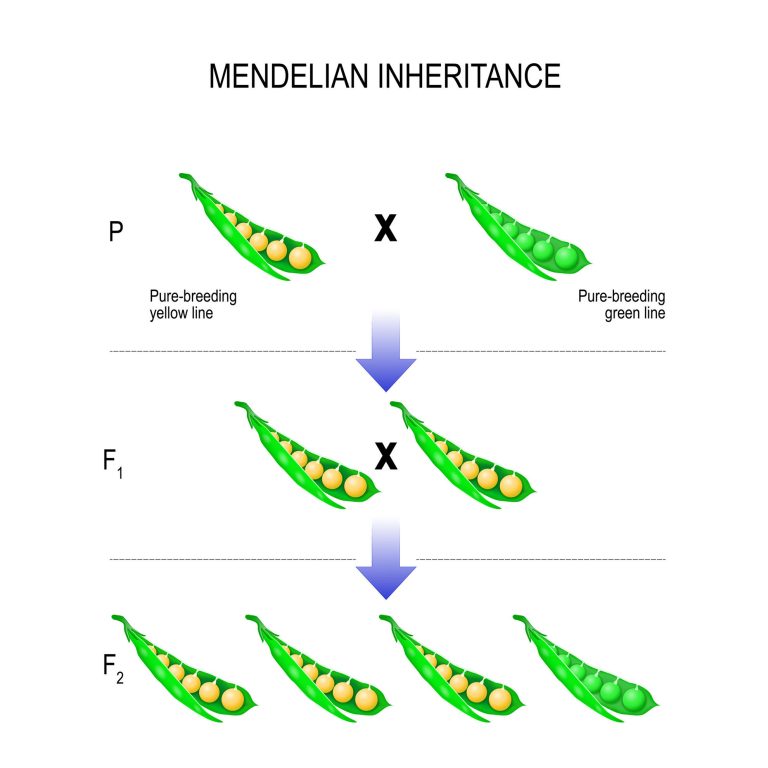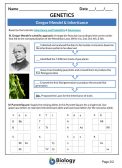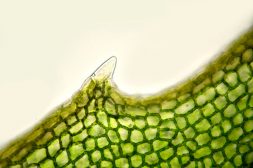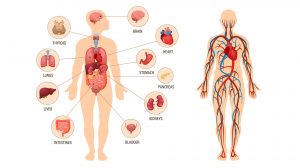Inheritance and Probability

Laws on Mendelian inheritance were based on garden pea plant experiments of Gregor Mendel.
Table of Contents
Reviewed by: Mary Anne Clark, Ph.D.
Gregor Mendel, an Austrian monk, is most famous in this field for his study of the phenotype of pea plants, including the shape of the peas on the pea plants.
Gregor Mendel’s Work
Mendel’s goal was to have a firm scientific basis on the relationship of genetic information passed on from parents to offspring. In light of this, he focused on how plant offspring acquired the phenotype of their seeds. In this example, there are two choices, round and wrinkled seeds.
The plants that were used in the experiment had to be true breeding, i.e. those plants with round seeds must have had parents with round seeds, who in turn had parents producing round seeds, etc. This is done to increase the accuracy of the results.
After successfully producing two generations from these true-breeding plants, the following was evident
- The first generation of plants produced all had a round seed phenotype.
- When these first-generation plants were crossed, a ratio of 3 round seeds averaged every 1 wrinkled seed.
- The ratio of 3:1 was not exact, though this is because of the randomness of the processes that are executed to produce these plants. For example, the independent assortment is completely random, as are mutations, therefore variable results occur producing a sampling error.
- Due to the scale of the experiment done by Gregor Mendel, the sampling error was smaller than that of a smaller scale experiment.
Mendel successfully hypothesized that the reason for this trend in phenotypes from generation to generation was down to the fact that genetic information was being passed on from their parents.
The fact that round seeds appeared more frequently than wrinkled seeds is due to round seeds being the dominant phenotype, which when present effectively ‘masks’ the phenotype of the recessive (wrinkled seed) gene.
Dominant and Recessive Alleles
- All plant seeds produced in the first generation were round
- 3 out of every 4 plant seeds produced in the second generation were round
The parents, one possessing wrinkled seeds the other possessing round were crossed together, for some reason in the first and second generation the presence of the round seed gene in offspring superseded the presence of the wrinkled seed. This is called dominance.
The next tutorial presents Gregor Mendel’s law of dominance. Learn more about this form of inheritance and how it can be predicted using a Punnett square
Fun activity: Simple Genetics Practice Problems
 | GREGOR MENDEL & INHERITANCE WORKSHEET This two-paged worksheet can be used to probe the student’s understanding of Gregor Mendel’s experiments on inheritance. This worksheet includes arranging text block and flowchart order, multiple choice, and Punnett Square exercises. Subjects: Genetics & Evolution |
You will also like...

IQ, Creativity and Learning
Human intelligence provided the means to utilize abstract ideas and implement reasoning. This tutorial takes a further l..

Plant Meristems and Growth
In plants, growth occurs in meristems, which are the site of repeated cell division of unspecialized cells. These cells ..

The Human Physiology
Physiology is the study of how living organisms function. Thus, human physiology deals specifically with the physiologic..

Regulation of Organic Metabolism, Growth and Energy Balance
The human body is capable of regulating growth and energy balance through various feedback mechanisms. Get to know the e..

Seed Plants
Seed plants are vascular plants. They differ from the other vascular plants in producing seeds that germinate into a new..

Consciousness and Behavior
Human consciousness and behavior are an interesting topic since they are determined and controlled by the brain. Conscio..
